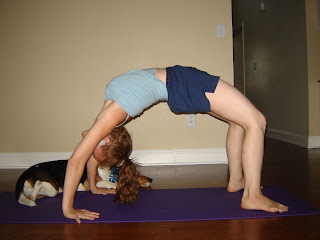
 Making the lower legs tight one should place the both feets on the either side of anus. This is called vajrasan. Which brind success to Yogis.
Making the lower legs tight one should place the both feets on the either side of anus. This is called vajrasan. Which brind success to Yogis. NOTE:
This can be considered as the meditative posture. While practising it for meditative purposes, one should close his eyes at the final stage.
TECHNIQUE:
- Sit with legs extented together, hands by the side of the body, palms resting on the ground, fingers of the hands pointing forward
- Fold the right leg at knee and place the foot under right buttock. Sole will remain inside.
- Similarly folding the right foot, place it under the left buttock.
- Hands resting on the respective sides.
- Sit erect, gaze in front close the eyes.
- While returning to the original position, bend litle towards right side take out your left leg and extend it.
- Similarly extend your right leg and return to the original position.
REMEMBER:
- While sitting on the bent feet. The heels should remain outside and toes inside.
- Do not sit on the heels.
BENIFITS AND LIMITATIONS:
- This strengthens thigh muscle and calf muscle.
- Person suffering from piles should not practise it.



